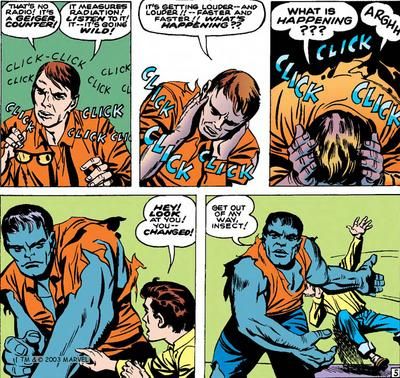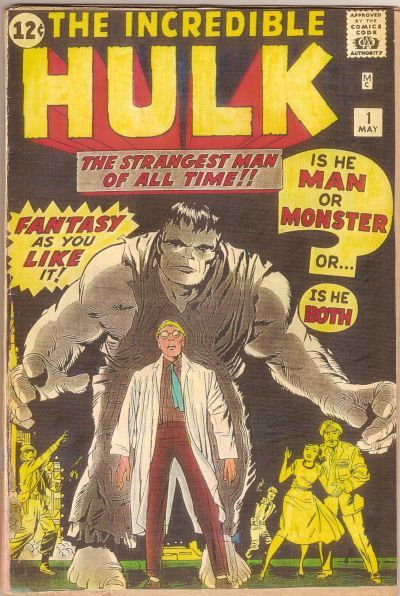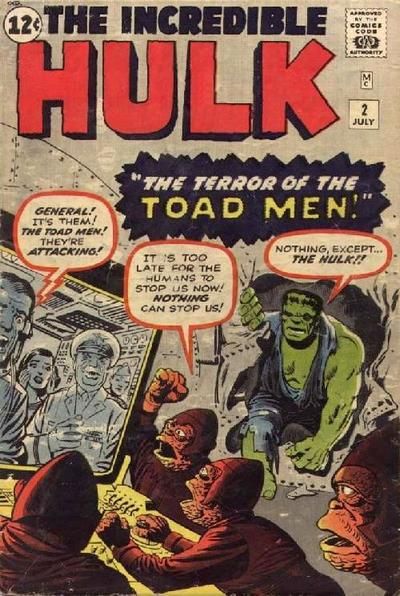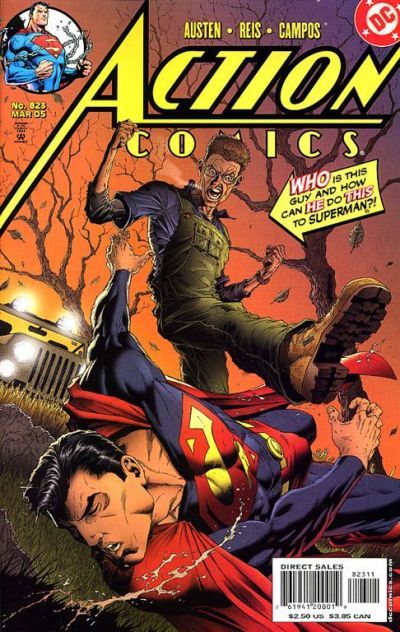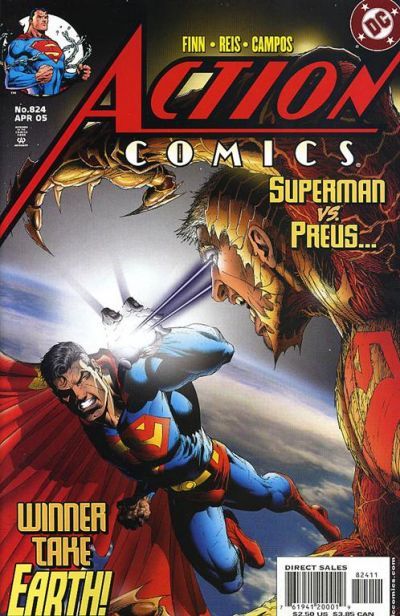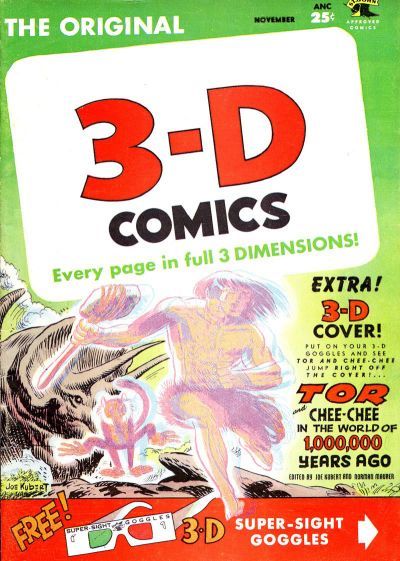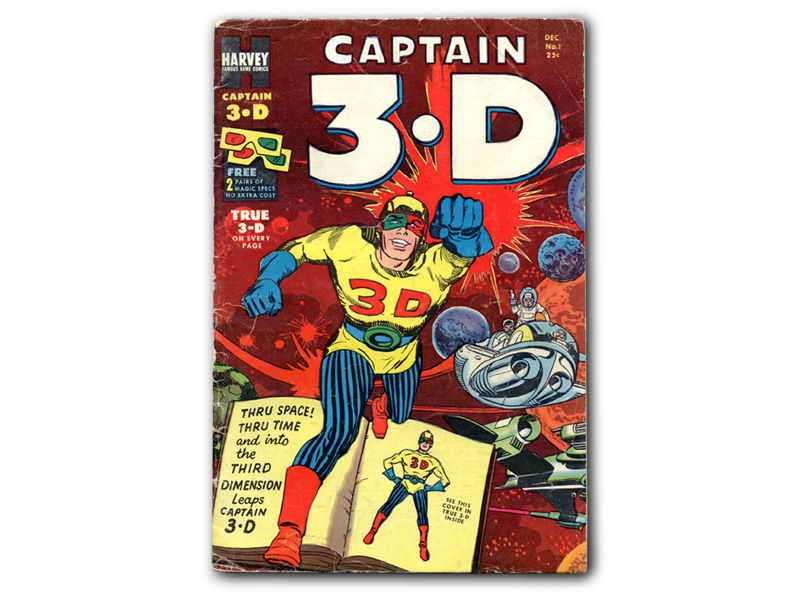This is the fortieth in a series of examinations of comic book urban legends and whether they are true or false. Click here for an archive of the previous thirty-nine.
Let's begin!
COMIC URBAN LEGEND: The Hulk is green because of poor color separations.
STATUS: True
One of the interesting aspects of the direct market is that the guaranteed sales of the individual comics enables publishers to spend more money on the individual comic books. Before the direct market existed, comic book companies were forced to publish, when sales were GOOD, twice as many copies of any given issue than they actually sold. Therefore, if it cost two cents to make a comic, it effectively cost FOUR cents, as the company had to publish four copies to sell two (with the unsold copies simply being trashed). With this in mind, companies had to be as stingy as they possibly could. We have addressed previous manisfestations of this before, where we saw comic companies keep the same numbering on a comic although the content changed dramatically, simply to avoid having to register a new #1 and pay an additional registration fee with the post office.
A symptom of this cost-cutting is evident in the coloring process. The four-color separations and newsprint-esque pages in Marvel comics did not always bode well for certain color schemes.
One such color was grey.
It was not that comics could not use the color grey - they could. It simply wouldn't come out the same way each time.
Therefore, when 1962's Incredible Hulk #1 rolled around, Marvel had a problem. Dr. Bruce Banner is transformed into a monster called the Hulk by Gamma Radiation. The giant behemoth known as the Hulk is grey...but as you can see, the grey-coloring is far from consistent within the issue. Just compare this interior pages with the cover (thanks to H, from the Comic Treadmill, for the scans of the interior pages).
Thus, in a decisive move, as of the second issue of the Hulk, the Hulk was now a color Marvel COULD color consistently - green.
The rest, as they say, is history.
COMIC URBAN LEGEND: Chuck Austen was J.D. Finn
STATUS: False
The great part about this interview with Chuck Austen by Arune Singh, is that Arune goes into such great depth with his question, I do not even have to provide any background for the quote. Instead, here is the quote:
CBR: Let's discuss the end of your run on "Action Comics." J.D. Finn was credited as writing the conclusion to your storyline, not you. Are you or are you not J.D. Finn? Because I remember reading your script for "Action Comics" #825 and it was quite different from Finn's story.
Austen: No. I think Eddie [Berganza, editor of Action Comics - BC] is J.D Finn. Maybe. That's a guess. I had a completely different ending in mind, one that left Gog a major villain, and...I mean let's be honest...I was ashamed of this initially, but let's just get this out there: I was fired and blackballed from DC. I was off Superman, period. It became complicated very quickly, from there. I was given the option of finishing the final issue of the arc I had begun, but being suddenly, and very unexpectedly, unemployed, I needed to find work right away doing something else. I was given the option to still write for DC, but not on Superman or any other top, or even mid-level character. I would have had to write under a pseudonym and take some lower tier project like "Prez" or "Blue Devil" that would have probably lasted an issue, and then I'd be out of comics, anyway. I turned that down because I knew that there were people who do like my work and I didn't want to go out with two strikes against me, I wanted to have the opportunity for anyone who did like my work to find it. So I went back to a hectic animation job that left me no time to finish my final script in the week allotted and they got "JD Finn" to do it.
I think it is reasonable to believe him in this instance.
COMIC URBAN LEGEND: William Gaines pretty-much single-handedly destroyed 3-D comic books.
STATUS: True
The 1950s were a low-point in comics, in terms of sales, so whenever a new trend came about that seemed to do well, everyone pounced upon it.
So when World's First comics, a 3-D comic starring Mighty Mouse, sold over a million copies in 1953, while costing the reader more than twice as much as a standard comic of the time, companies took notice.
A separate organization set up to meet this wave of interest was begun by Leonard Maurer, his brother Norman and cartoonist Joe Kubert, who created a particularly good 3-D process (it was very popular back then for people to try to develop 3-D processes). The group (calling themselves American Sterographic Corporation) licensed their process to any comic company willing to pay.
The 3-D boom was a large pie, and everyone wanted a piece.
The pie turned sour, though (what an analogy! I'm like a poet!), in 1954, when William Gaines, owner of EC Comics, began a patent infringement action against all comic book companies who used the 3-D process. Noted 3-D expert Ray Zone explains,
With a patent search, Gaines discovered an October 13, 1936 Patent (no. 2,057,051) by Freeman H. Owens which was a Method of Drawing and Photographing Stereoscopic Pictures in Relief and described reproduction of a newspaper cartoon drawing as a "stereoscopic relief picture" with separate parts of the cartoon "copied on separate transparent sheets" and "opaque on the back to correspond with the outline in each case." The sheets, "advantageously celluloid," were recombined and copied "to make the pair of stereoscopic views" by shifting them laterally.
"A month before its expiration," notes [Leonard - BC] Maurer, "Gaines bought the Freeman Owens patent -- which never turned up in our patent search -- from the dying inventor for a few hundred bucks." Then Gaines initiated suit for patent infringement on all the publishers of 3-D comics including St. John. "That suit," says Maurer, was "based on surreptitious individual tape recordings of meetings with Joe and Norman, where Gaines accused me of stealing the Owens patent out of the patent office (big joke). It triggered the resignation of Harvey Kurtzman and Bill Elder, who had gotten confidential disclosures of the entire process from me and felt betrayed by Gaines when phony accusations came out in court.
"The famous Judge Liebowitz threw the case out with the comment that the Gaines deposition read like a 'fantasy story out of Mad Comics.' But, it served its purpose, and ruined all my chances to license the 3-D Illustereo process to anyone other than St. John.
Gaines' action, along with the high cost of making 3-D comics (and the high cost of the comics themselves), effectively destroyed the 3-D comic market.
An interesting side-note is that, just as this action began, Harvey Comics was launching a very aggresive campaign in support of its comic, Captain 3-D. The perfect storm of high cost of individual issues, high overhead and legal fees destroyed them, even though Captain 3-D was a high quality product produced by the Joe Simon and Jack Kirby team of artists. It is told (although it sounds hard to believe) that Harvey ended up losing over $200,000 due to the failure of Captain 3-D. I do not know if it is true, but what I DO know is that, fifty years later, it is VERY easy to get ahold of Harvey 3-D glasses from the launch of Captain 3-D (just try on an auction site, you'll be amazed), so they must have produced TONS of these things. With that in mind, I guess it isn't AS hard to believe after all.
Well, that's it for this week, thanks for stopping by!
Feel free to drop off any urban legends you'd like to see featured!!

